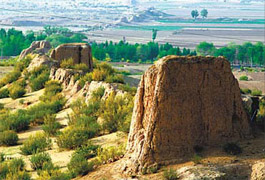
The Great Wall of China has been measured; it is 2000 kilometers longer
 |
However, the report also warns that the monument, which is allegedly the only man-made structure visible from space and has been on UNESCO's World Heritage List since 1987, is severely endangered in many places. The blame lies with road construction, industrial development, and extreme weather conditions.
The new measurement was conducted with the help of GPS technology and infrared radiation, which revealed previously unknown mountain and desert sections.
The Wall was built as a protection against Mongol tribes, with its foundations laid in the 3rd century BC during the reign of the Qin dynasty. According to precise measurements, it consists of 6,259.6 kilometers of wall, 359.7 kilometers of trenches, and utilizes natural obstacles such as mountains and rivers over a distance of 2,232.5 kilometers.
The present form of the Great Wall of China dates back to the 15th to 17th centuries, when its longest section was constructed. It passes through ten provinces and crosses China from Gansu province in the west to Liaodong Bay in the east; in some places, it rises to a height of 11 meters.
The newly mapped sections were built during the Ming dynasty, which ruled China from 1368 to 1644. Some of these sections have become buried under sand due to frequent sandstorms or have turned into mere piles of rubble and dirt, so they could completely disappear within 20 years. Particularly in Gansu province, some sections of the wall were constructed from sand and clay, which cannot compare in durability to the bricks and stones from other sections.
The English translation is powered by AI tool. Switch to Czech to view the original text source.
2 comments
add comment
Subject
Author
Date
2000 kilometrov
21.04.09 08:21
extra 2000 km
takyarchitekt
21.04.09 11:33
show all comments










